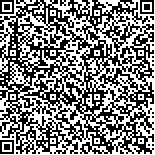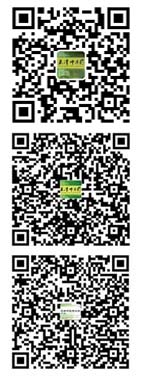| 本文已被:浏览 92次 下载 27次 |

码上扫一扫! |
|
|
| 经皮穴位电刺激的研究现状和趋势——基于CiteSpace和VOSviewer的可视化分析 |
|
朱征1,2, 高昊昊3, 刘凇含3, 李佳穆3, 席强3, 邱继文4, 章明星5, 郭义1,6
|
|
1.天津中医药大学实验针灸学研究中心, 天津 301617;2.天津中医药大学针灸推拿学院, 天津 301617;3.天津中医药大学中医学院, 天津 301617;4.天津中医药大学医学技术学院, 天津 301617;5.天津中医药大学中西医结合学院, 天津 301617;6.国家中医针灸临床医学研究中心, 天津 300381
|
|
| 摘要: |
| [目的] 采用知识图谱和文献计量学方法梳理30余年来经皮穴位电刺激(TEAS)领域的中英文文献,探讨此领域的知识现状、研究热点及变化趋势,以期为今后的研究提供参考。[方法] 计算机检索中国知网(CNKI)及Web of Science的相关文献,检索建库至2023年12月1日。应用CiteSpace与VOSviewer软件对相关文献进行作者、机构共现分析,关键词聚类和突现分析,并绘制可视化图谱。[结果] 共纳入中文文献2 753篇,英文文献755篇。通过分析发现TEAS领域核心作者20人,形成了以方剑乔教授、王均炉教授为核心的研究团队,浙江中医药大学及其附属医院、黑龙江大学及其附属医院等多所机构形成了紧密的合作网络。经共现网络可视化分析得出频次前10位的关键词及其形成的7个聚类。国内外研究核心团队的研究重点为TEAS的镇痛作用及其机制。[结论] TEAS相关研究在近30年有一定的发展,其研究主要围绕镇痛但不局限于痛症的治疗,经皮穴位电刺激在康复训练、提高睡眠质量、改善认知功能、缓解焦虑抑郁等神经-内分泌-免疫系统方面的调节作用的研究逐步成为研究的热点。 |
| 关键词: 经皮穴位电刺激 针灸 CiteSpace VOSviewer 可视化分析 |
| DOI:10.11656/j.issn.1673-9043.2025.02.11 |
| 分类号:R245.97 |
| 基金项目:载人航天工程航天医学实验领域项目(HYZHXMX 02002);2023年国家级大学生创新创业训练计划资助项目(202310063007)。 |
|
| Research hotspots and trends of transcutaneous electrical acupoint stimulation:visual analysis based on CiteSpace and VOSviewer |
|
ZHU Zheng1,2, GAO Haohao3, LIU Songhan3, LI Jiamu3, XI Qiang3, QIU Jiwen4, ZHANG Mingxing5, GUO Yi1,6
|
|
1.Research Center of Experimental Acupuncture Science, Tianjin University of Traditional Chinese Medicine, Tianjin 301617, China;2.School of Acupuncture-Moxibustion and Tuina, Tianjin University of Traditional Chinese Medicine, Tianjin 301617, China;3.School of Traditional Chinese Medicine, Tianjin University of Traditional Chinese Medicine, Tianjin 301617, China;4.School of Medical Technology, Tianjin University of Traditional Chinese Medicine, Tianjin 301617, China;5.School of Integrated Chinese and Western Medicine, Tianjin University of Traditional Chinese Medicine, Tianjin 301617, China;6.National Clinical Research Center for Chinese Medicine Acupuncture and Moxibustion, Tianjin 300381, China
|
| Abstract: |
| [Objective] This study adopts knowledge graph and bibliometric methods to sort out the Chinese and English literature in the field of percutaneous acupoint electrical stimulation(TEAS) over the past 30 years,explore the current knowledge status,research hotspots,and trends in this field,in order to provide reference for future research.[Methods] Use a computer to search for relevant literature on China National Knowledge Infrastructure(CNKI) and Web of Science,from inception to December 1,2023. Apply CiteSpace and VOSviewer software to conduct author and institution co-occurrence analysis,keyword clustering and emergence analysis on relevant literature,and draw relevant visualization maps.[Results] A total of 2 753 Chinese literatures and 755 English literatures were included. Through analysis,it was found that there are 20 core authors in the TEAS field,forming a core team consisting of Professor Fang Jianqiao and Professor Wang Junlu. Multiple institutions,such as Zhejiang University of Traditional Chinese Medicine and its affiliated hospitals,Heilongjiang University and its affiliated hospitals,have formed a close cooperation network. Through co-occurrence network visualization analysis,the top 10 keywords in frequency and their 7 clusters formed were identified. The research focus of the core teams at home and abroad is on the analgesic effect and mechanism of TEAS.[Conclusion] TEAS related research has made some progress in the past 30 years,mainly focusing on pain relief,but not limited to the treatment of pain symptoms. The research on the regulatory effects of percutaneous acupoint electrical stimulation on the neuroendocrine immune system,including rehabilitation training,improving sleep quality,improving cognitive function,and alleviating anxiety and depression,has gradually become a hot topic. |
| Key words: transcutaneous electrical acupoint stimulation acupuncture CiteSpace VOSviewer visual analysis |
